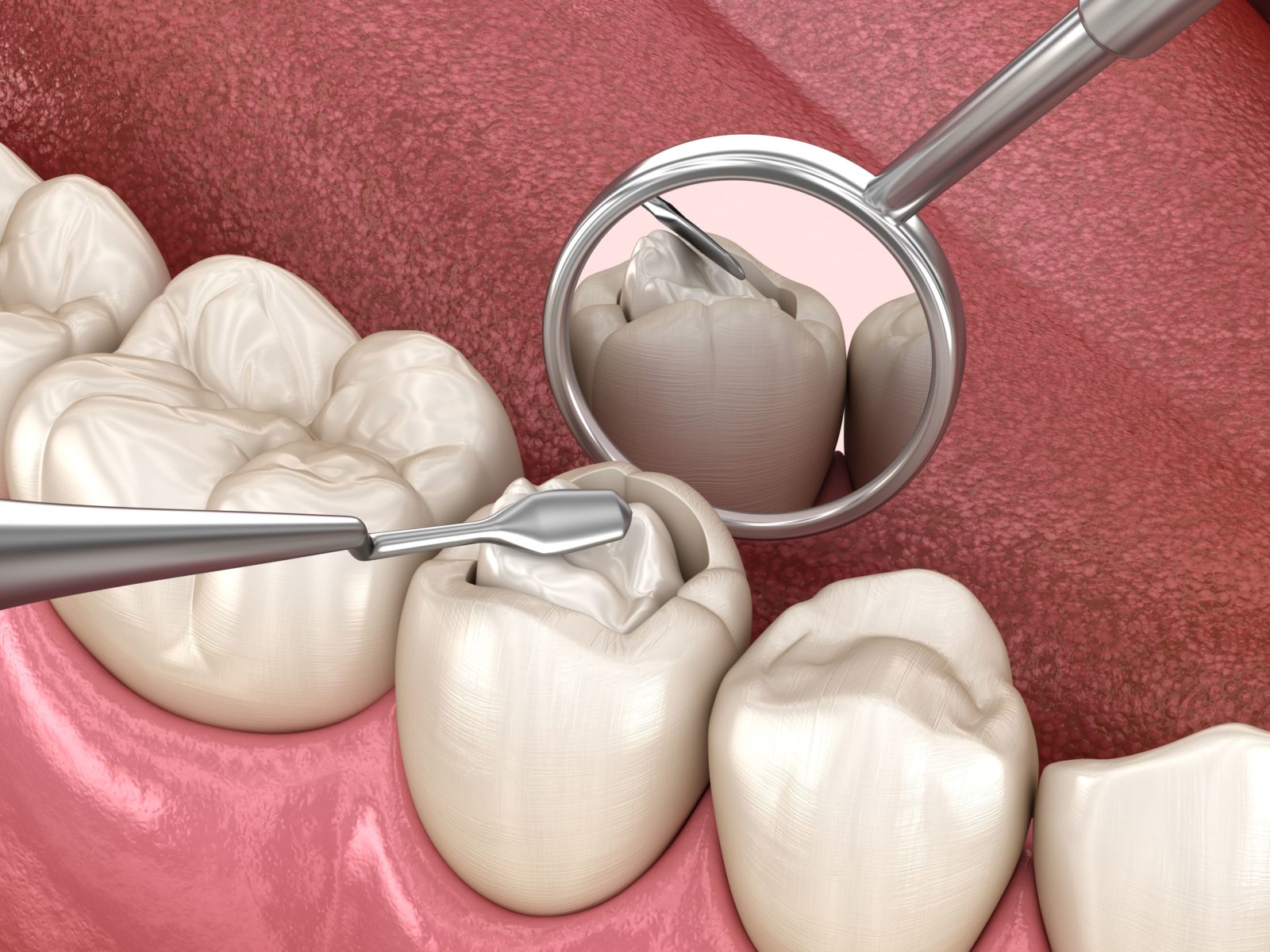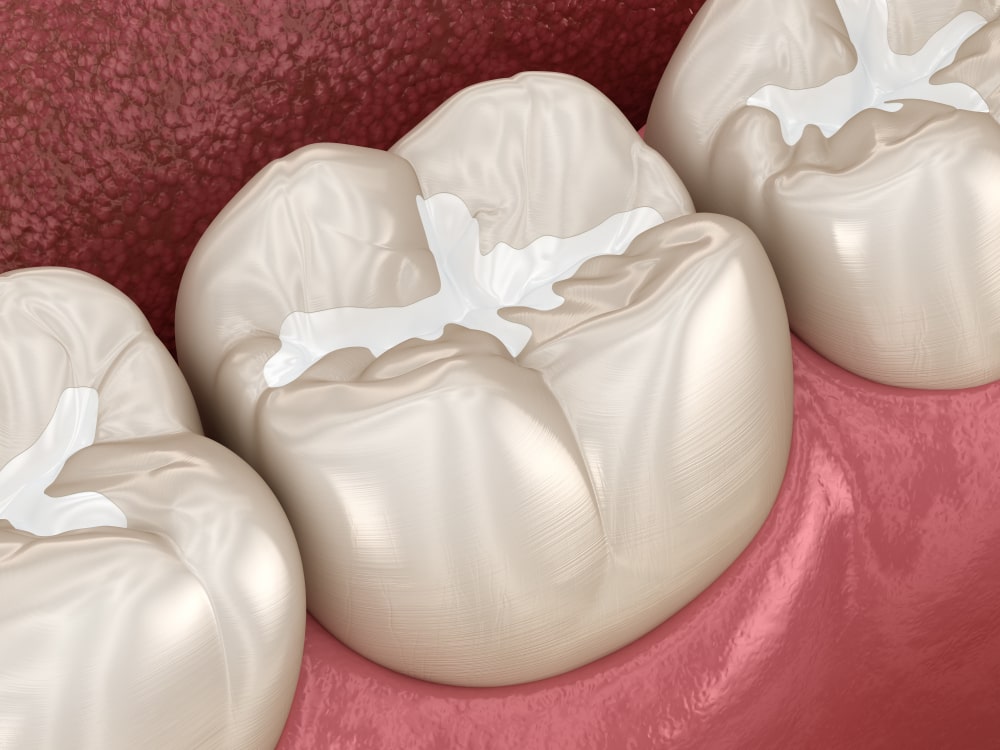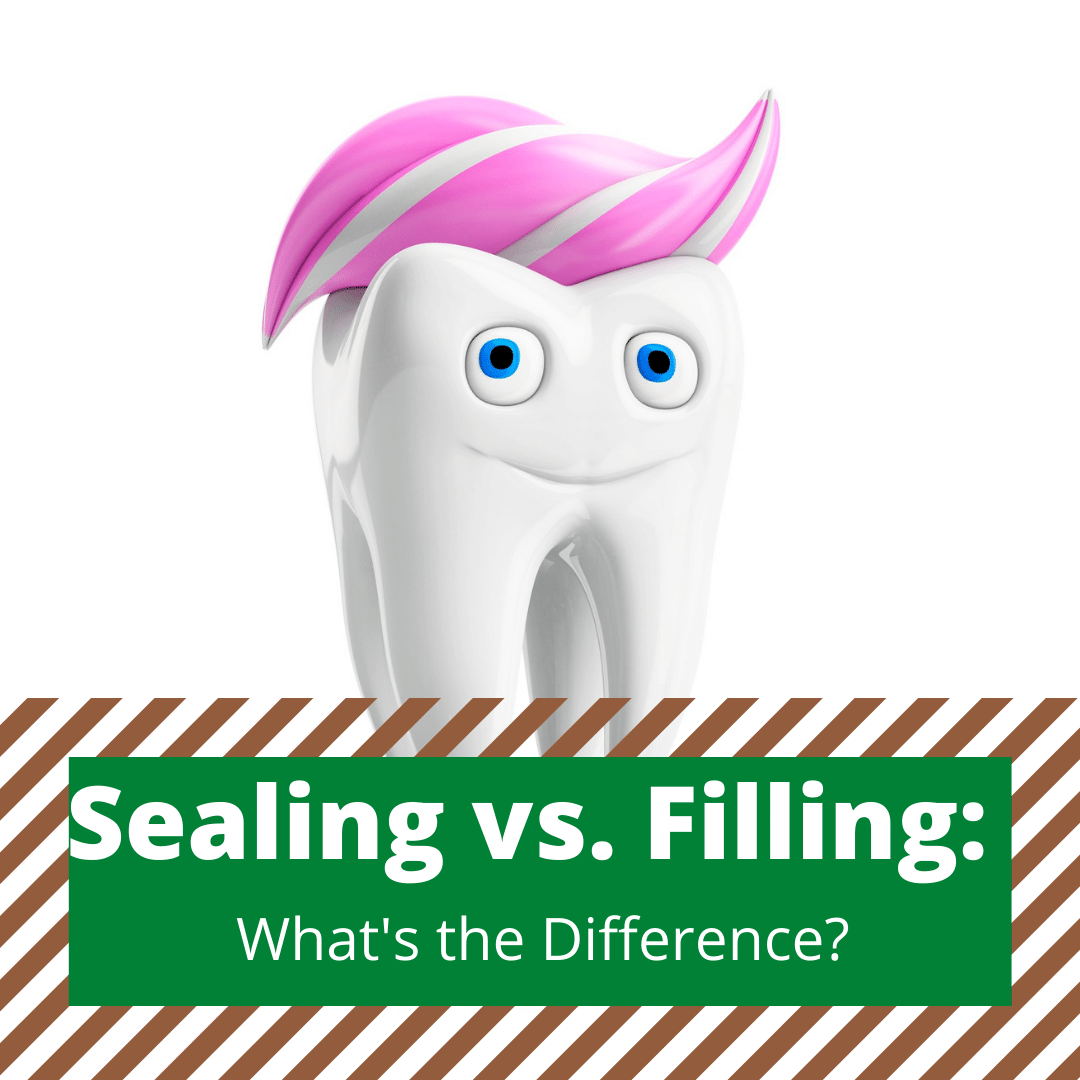When your child gets a cavity, there are a couple different ways their pediatric dentist can restore the tooth. The first way is by removing the decayed tissue and placing a dental filling in the remaining cavity. However, another way your child’s dentist can treat a cavity is by sealing the tooth. Although both filling and sealing cavities can work to stop the spread of tooth decay, there are certain situations where one may be better than the other. Let’s take a deeper look at the differences between filling or sealing cavities and cases where one treatment may be recommended over the other.
Fillings

Most people are somewhat familiar with dental fillings or have at least heard of them. A dental filling is used to fill in an area of the tooth that has been eaten away by tooth decay. They are able to be placed anywhere in the mouth from the front teeth to the back molars. Nowadays, most dentists use composite fillings because of their ability to bond directly with tooth enamel, natural coloring, and the fact that they minimize allergic reactions.
Composite fillings are placed by first removing the decayed tissue and shaping the remaining tooth structure. Since composite resin bonds directly to the enamel and does not require the use of adhesives or extensive enamel modification, the majority of your child’s natural tooth structure will be preserved. After the decayed tissue has been removed, then your child’s dentist will fill in the remaining cavity with softened composite resin, hardening it with a special curing light one layer at a time. In most cases, only about 1-3 layers are needed to fill a cavity, depending on its size, shape, and location. The final layer of the filling will be shaped and polished so that it blends in seamlessly with the rest of the tooth.
Sealing

Sealing the tooth takes a slightly different approach. Composite resin is also used for dental sealants, however it is applied differently. When sealing a tooth, your child’s dentist will apply a thin layer of composite resin to the chewing surface of your child’s molars and premolars. This “seals” the tooth and prevents decay-causing bacteria from being able to damage the enamel.
Dental sealants are extremely easy to place, only take a few minutes, and do not require the use of dental anesthetic or sedation. Before having dental sealants placed, your child will need to have their teeth cleaned in order to remove plaque, tartar, and bacteria from the surface of their teeth. This is so these things do not get stuck underneath the sealant. Once the teeth are clean, your child’s dentist will brush on the composite resin and then harden it with a curing light.
Which does my child need?
While both methods use composite resin and stop the spread of tooth decay, there are certain situations where one may be better than the other. For example, dental sealants are an ideal way to prevent cavities from developing, whereas composite fillings are not necessary until a cavity has developed. However, dental sealants can be used to treat early signs of tooth decay before a cavity forms. If your child’s dentist notices an area that looks like it will eventually form a cavity, sealants can be used to halt that process and ultimately stop the cavity before it starts.
However, dental sealants are not effective once a cavity has already formed. In these cases, composite fillings are recommended to restore the tooth. While dental sealants are ideal for preventing cavities on healthy teeth or teeth with early signs of decay, only dental fillings can actually restore a tooth that has been affected by tooth decay. Ultimately, only your child’s pediatric dentist can tell you which treatment is right for your child based on what they find during your child’s dental exam.






